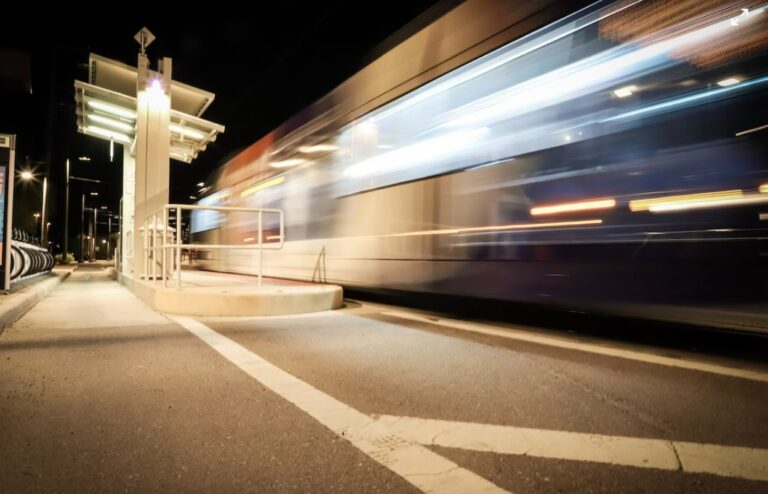High-speed rail has advanced significantly thanks to the evolution of transportation, completely changing how we travel. The globe has seen a new era of quick and effective transportation because of trains’ mind-boggling speeds.
In this article, we set out on an intriguing adventure to discover the world’s fastest trains, marvel at their amazing engineering accomplishments, and study the technology that allows them to push the speed envelope.
These trains represent the epitome of speed, engineering innovation, and efficient transportation, showcasing the advancements made in high-speed rail technology around the world.
Table of Contents
Top 7 fastest trains in the world
These are currently the 7 fastest trains in the world:
The Shanghai Maglev Revolution, China
We start our exploration by looking into magnetic levitation (Maglev) trains, which use magnetic fields to smoothly levitate above the rails. The Shanghai Maglev Train in China is the quickest commercially running train among these ground-breaking systems.
It connects Shanghai Pudong International Airport to the city center, traveling a distance of 30 kilometers in just 7 minutes, with an astounding top speed of 431 km/h (268 mph). We’ll go into the science behind Maglev trains, their benefits, and the current initiatives trying to increase their top speeds.
Fuxing Hao CR400AF/BF, China
China has advanced significantly in high-speed rail, and the Fuxing Hao CR400AF/BF is the pinnacle of that advancement. This train displays cutting-edge technology, safety measures, and passenger comfort while traveling at up to 400 km/h (249 mph).
We examine the ground-breaking innovations that have helped the Fuxing Hao become a shining example of China’s high-speed prowess.
The TGV, France
Our next stop on the voyage is France, the country that is home to the TGV (Train à Grande Vitesse), a well-known representation of high-speed trains. Since its debut in 1981, the TGV network—known for its grace and dependability—has developed steadily.
During a test run in 2007, the TGV POS, the company’s fastest train, had an impressive top speed of 574.8 km/h (357.2 mph). The TGV’s superior aerodynamics, state-of-the-art signaling systems, and current work on the models for the future generation of TGVs are just a few of the success factors that we’ll explore.
The AGV, Italy
Italy’s fastest train, the AGV Italo, with a top speed of 360 km/h (224 mph). It flaunts a modern aesthetic, cutting-edge technology, and first-rate passenger conveniences. We examine the AGV Italo’s contribution to improving Italy’s transportation system as well as its effects on travel effectiveness.
Siemens velaro E/AVS 103, Spain
Spain’s Siemens Velaro E, known as AVS 103, has become a stalwart in the country’s high-speed rail network. Operating at speeds of up to 350 km/h (217 mph), it combines advanced engineering, safety features, and operational excellence to provide seamless and efficient travel.
We delve into the technological innovations and operational achievements that have positioned AVS 103 as a leader in Spain’s high-speed rail system.
Shinkansen “bullet trains” in Japan
Our next trip is Japan, where the bullet trains, also known as Shinkansen, have come to represent the country’s technological might. Shinkansen Series E5 and E6 trains, which are the fastest in the fleet, can travel up to 320 km/h (199 mph) and 320 km/h (199 mph), respectively.
We will examine the Shinkansen’s history, exemplary safety record, engineering breakthroughs that made it feasible, and aspirational ambitions to deploy even faster trains, such as the projected Maglev Shinkansen.
Eurostar e320 (United Kingdom/France/Belgium)
After navigating the English Channel, we arrive at the Eurostar, a quick train that connects mainland Europe with the UK. The newest model of the fleet, the Eurostar e320, can transport passengers quickly from London to Paris or Brussels with its top speed of 320 km/h (199 mph).
We’ll look at the difficulties encountered during the building of the Channel Tunnel, the technical aspects that allow the Eurostar to pass through it. And the ongoing initiatives to improve communication and speed up travel.
The transportation revolution
The development of train technology and the introduction of the fastest trains in the world have profoundly changed the way people travel and the way society and the economy operate.
The way people travel has been revolutionized, stimulating economic growth and promoting sustainable transportation systems.
Faster speeds, shorter travel distances, better connectivity, environmental advantages, and more safety and comfort have all contributed to this. These effects are anticipated to be progressively enhanced and high-speed rail travel’s future will be shaped by the ongoing development of train technology.
Read also: More and more people choose not to fly: what is the “flight shaming” movement












